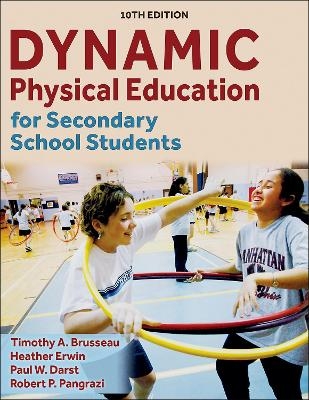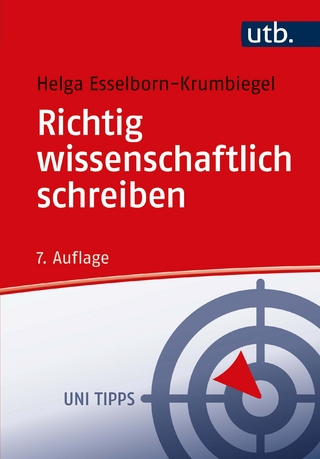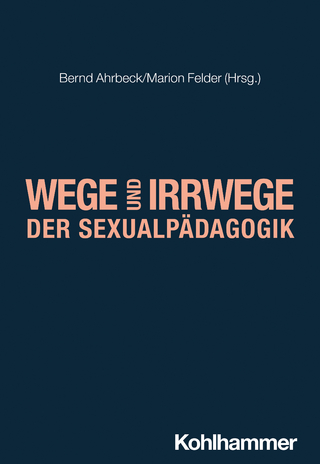
Dynamic Physical Education for Secondary School Students
Human Kinetics (Verlag)
978-1-7182-1383-8 (ISBN)
- Lieferbar (Termin unbekannt)
- Versandkostenfrei innerhalb Deutschlands
- Auch auf Rechnung
- Verfügbarkeit in der Filiale vor Ort prüfen
- Artikel merken
Dynamic Physical Education for Secondary School Students (DPE) continues its legacy as the go-to textbook for preparing future secondary physical educators. Now in its 10th edition, this trusted resource presents a standards-based approach to teaching physical education. DPE guides physical education teacher education (PETE) students through the process of creating a positive learning environment that is developmentally and culturally appropriate for all students and is designed to develop skills that promote physical activity outside of school and across the life span.
DPE is an ideal resource for preparing preservice physical educators to feel confident and effective in the class setting from day one. It provides the foundational knowledge to teach quality physical education and complements that learning with a host of ready-to-use activities and lesson plans. PETE students can use each lesson plan as is or build their own lesson plans from the provided activities.
The principles of DPE have been implemented and studied for more than five decades and have stood the test of time. The text emphasizes skill development, activity promotion, and physical fitness behaviors that serve as the foundation of quality physical education programming and teaching. The enhancements in this 10th edition continue to build on those pillars to put theory into practice:
Updates throughout the text stress the importance of culturally relevant pedagogy and curricula and emphasize social–emotional learning.
QR codes link directly to complete units and lessons on the Dynamic PE ASAP website so readers can immediately see application of specific activities.
Activity chapters have been reorganized around game themes to better align with current curriculum approaches, and new activities and games (such as pickleball) have been added.
This text will help current and future educators promote physical activity beyond the school day. It offers a vast array of evidence-based activities and instructional strategies that will help PETE students shape quality physical education programs, employ successful teaching practices for secondary students, administer a comprehensive school physical activity program (CSPAP), and offer activities that motivate students and improve their skill and competence. Teaching tips also provide insights drawn from the real-life experiences of teachers and teacher educators.
DPE continues to meet the needs of preservice and in-service teachers in developing curricula that meet physical education standards.
DPE continues to be one of the most widely used and influential secondary physical education texts in the field. It helps readers implement current best practices and equips students with the information they need to create engaging and meaningful PE programs.
Timothy A. Brusseau, Jr., PhD, is an assistant professor of physical education at the University of Utah in the department of exercise and sport science. His teaching focuses on secondary physical education curriculum and methodology as well as coaching and diversity. Research interests include youth physical activity and programming. Brusseau received a PhD from Arizona State University in physical education pedagogy. He is actively involved in SHAPE America nationally and regionally, regularly making teaching and research presentations. He has authored numerous articles related to teaching and physical activity. Heather Erwin, PhD, earned her doctorate in kinesiology from the University of Illinois at Urbana-Champaign in 2006. She is currently a professor in the department of kinesiology and health promotion at the University of Kentucky at Lexington, specializing in physical education teacher education. Her research focus is school-based physical activity, with an emphasis on physical education, classroom physical activity, and recess settings. Erwin has taught elementary physical education, worked with summer recreation programs for over 10 years, taught numerous training workshops on child and adolescent physical activity, and conducted extensive research in school settings. She has authored or coauthored multiple articles—both research-based and applied—on the promotion of physical activity and youth activities. Paul W. Darst, PhD, received a doctorate in physical education from the Ohio State University. He is a department chair at the polytechnic campus of Arizona State University and a professor in the area of physical education teacher preparation. His research and teaching focus on secondary school physical education curricula, methods of teaching in the secondary schools, and activity habits of middle and high school students. He has been active professionally at the state, district, and national levels of SHAPE America and has received numerous honors and speaking invitations. Darst is the author of Outdoor Adventure Activities for School and Recreation Programs (Waveland Press), Analyzing Physical Education and Sport Instruction (Human Kinetics), and Cycling (Scott Foresman and Company). He has written many articles and made numerous presentations to teachers on new ideas in teaching and on working with students. Robert P. Pangrazi, PhD, is an internationally recognized expert in physical education training and instruction. He is a professor emeritus at Arizona State University and an educational consultant for HOPSports and the U.S. Tennis Association. His physical education textbooks have sold over 750,000 copies worldwide. Pangrazi has published over 50 textbooks and 100 research and professional articles. He has been a keynote speaker for 39 state and district conventions and an invited speaker at nearly 400 national and international conferences. He regularly conducts training sessions for schools and universities and works regularly as a motivational speaker. His approach to elementary school physical education has been used worldwide by the Department of Defense Dependents’ Schools, has been implemented nationally by the Edison Project, and is used in hundreds of public, private, and charter schools across the United States. Pangrazi has received numerous awards, including the Distinguished Service Award from the President’s Council on Physical Fitness and Sports, the National Distinguished Service Award presented by the AAHPERD (now SHAPE America) Council on Physical Education for Children, and the Curriculum and Instruction Emeritus Honor Award from the NASPE (now SHAPE America) Curriculum and Instruction Academy. He is a fellow in the American Academy of Kinesiology and Physical Education (now National Academy of Kinesiology) and a SHAPE America honor fellow.
Part I. Designing an Effective Physical Education Program
Chapter 1. Physical Education in the Secondary School
What Is Physical Education?
Rationale for Physical Education
Major Outcomes for Physical Education
Physical Education Content Standards
Perspectives Influencing Physical Education
Issues Affecting Physical Education Programs
Essential Components of a Quality Program
Characteristics of Successful Physical Education Programs
Chapter 2. Steps in Developing an Effective Curriculum
Designing a Quality Curriculum
An Articulated Curriculum: Grades K Through 12
Chapter 3. Curriculum Approaches
Promoting Skill Development and Physical Activity Approach
Sport Education Approach
Tactical Games Approach
Knowledge Concepts Approach
Fitness Education Approach
Personal and Social Responsibility Approach
Part II. Teaching Students in an Effective Physical Education Program
Chapter 4. Planning for Effective Instruction
Develop Departmental Policies
Factors Influencing Preinstructional Decisions
Making Preinstructional Decisions
Teach Each Student as a Whole Person
Plan for Optimal Skill Learning
Design Comprehensive Unit Plans
Create Quality Lesson Plans
Major Instructional Components of the Lesson
Reflect on the Completed Lesson
Chapter 5. Improving Instructional Effectiveness
Defining Effective Instruction
Demonstrate a Caring Attitude Toward Students
Develop Effective Listening Skills
Maintain Student Interest
Communicate Effectively With Your Class
Use Nonverbal Communication
Demonstrate and Model Skills
Facilitate Learning With Instructional Cues
Use Effective Instructional Feedback
Consider the Personal Needs of Students
Improving Teaching Skills
Evaluating Effective Teaching
Systematically Observing to Improve Quality of Instruction
Chapter 6. Teaching Styles
Direct Instruction Style
Task (Station) Style
Mastery Learning (Outcomes-Based) Style
Individualized Style
Cooperative Learning
Reciprocal Teaching Style
Inquiry Style
Teaching Styles and Student Learning
A Framework for Using Multiple Teaching Styles
Dynamic Instruction: Elements Common to All Styles
Chapter 7. Management
Strive for a Well-Managed Class
Use Effective Class Organization Strategies
Teach Responsible Student Behavior
Implement a Proactive Behavior Management Approach
Maintain and Promote Acceptable Behavior
Decrease Unacceptable Behavior
Deal With Severe Misbehavior
Use Criticism Cautiously
Make Punishment a Last Resort
Know the Legal Consequences of Expulsion
Chapter 8. Assessment, Evaluation, Grading, and Program Accountability
Assessment of Student Performance
Physical Activity Assessment
Cognitive Assessment
Affective Assessment
Types of Assessments
Student Self-Evaluation
Other Assessments
Criteria and Uses for Student Evaluation
Uses for Student Evaluation
Grading Considerations
Chapter 9. Inclusion
Defining Adapted Physical Education and Sport
Laws Related to Adapted Physical Education
Least Restrictive Environment
Exclusion, Segregation, Integration, and Inclusion
Development of the IEP
Systematic Approach to Successful Inclusion
Parental Support
Recruiting and Training Paraeducators and Aides
Part III. Developing and Administering a Total Program
Chapter 10. Safety and Liability
Safety
Supervision
Equipment and Facilities
Torts
Liability
Personal Protection: Minimizing the Effects of a Lawsuit
Chapter 11. Supporting and Advocating for Physical Education
Advocacy and Effective Methods for Physical Education
Budget Strategies for Physical Education
Professional Development
Chapter 12. Comprehensive School Physical Activity Programs
Strategies for Development, Implementation, and Evaluation of a CSPAP
Chapter 13. Intramurals, Physical Activity Programs, and Athletics
Intramurals
Physical Activity Programs
Interscholastic Athletics
Part IV. Implementing Instructional Activities
Chapter 14. Introductory Activities
Agility Activities
Locomotor Challenges
Individual Activities
Partner and Small-Group Activities
Chapter 15. Physical Fitness
Fitness of America’s Youth
Health-Related and Skill-Related Physical Fitness
Creating a Positive Fitness Experience
Exercises for Fitness Routines
Avoiding Harmful Practices and Exercises
Activities and Routines for Developing Fitness
Health Club Workouts
Chapter 16. Net and Wall Activities
Badminton
Racquetball
Pickleball
Tennis
Volleyball
Chapter 17. Invasion Activities
Basketball
Field Hockey
Flag Football
Lacrosse
Rugby
Soccer
Speed-a-Way
Team Handball
Chapter 18. Target Activities
Archery
Bowling
Disc Games
Golf
Chapter 19. Recreational and Lifetime Activities
In-Line Skating
Jogging
Rhythmic Activity
Rope Jumping
Softball
Strength Training
Swimming and Aquatics
Group Initiative Activities
Orienteering
Ropes Course Activities
Traverse Climbing-Wall Activities
| Erscheinungsdatum | 08.03.2024 |
|---|---|
| Verlagsort | Champaign, IL |
| Sprache | englisch |
| Gewicht | 1474 g |
| Themenwelt | Sozialwissenschaften ► Pädagogik |
| Weitere Fachgebiete ► Sportwissenschaft | |
| ISBN-10 | 1-7182-1383-2 / 1718213832 |
| ISBN-13 | 978-1-7182-1383-8 / 9781718213838 |
| Zustand | Neuware |
| Haben Sie eine Frage zum Produkt? |
aus dem Bereich


